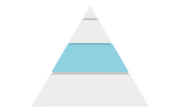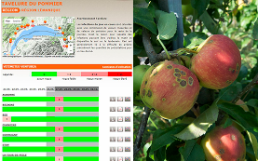Decision making aids

Decision-making aids make it easier to judge whether or not direct intervention is necessary; the emergence of certain diseases or pests, for example, can be predicted on the basis of weather forecasts. The monitoring of harmful organisms and advice from the cantonal plant-protection services constitute other important sources of information.

Decision-making aids make it easier to judge whether or not direct intervention is necessary; the emergence of certain diseases or pests, for example, can be predicted on the basis of weather forecasts. The monitoring of harmful organisms and advice from the cantonal plant-protection services constitute other important sources of information.
In viticulture, for example, a number of fungal diseases such as grapevine downy mildew (Plasmopara viticola) can attack the vines throughout the entire growing season, depending on the humidity. To protect the vines and the harvest, winegrowers must apply synthetic chemical plant-protection products. With a forecasting model for grapevine downy mildew, farmers can follow developments and gauge when a response is appropriate. The algorithms of this system are based on the observations and data from a network of 172 meteorological stations covering the length and breadth of Switzerland. Are there any attacks in my region at the moment? How do I recognise the disease? What are the development forecasts for the next few days? The Agrometeo forecasting system provides detailed, up-to-date plant-protection information and technical data for monitoring the development of the disease. Information is available for the majority of pathogens and pests of agricultural crops. Launched 15 years ago by Agroscope’s Changins site, this system is used by most Swiss winegrowers and is achieving significant success in Europe, particularly in Germany, northern Italy, Austria and France. Agroscope continues to optimise the system.





